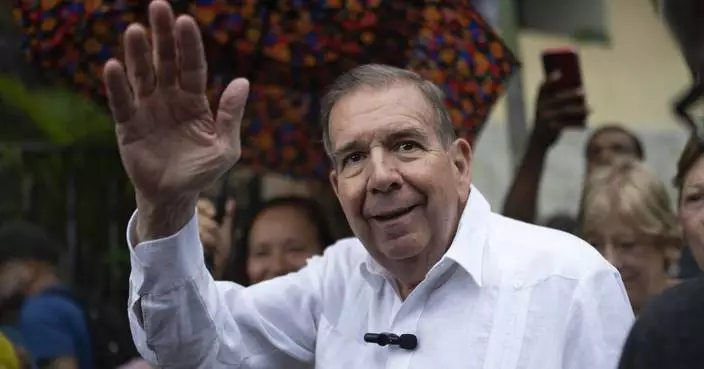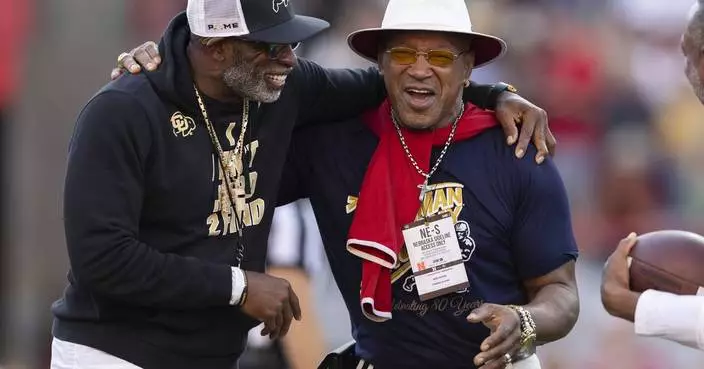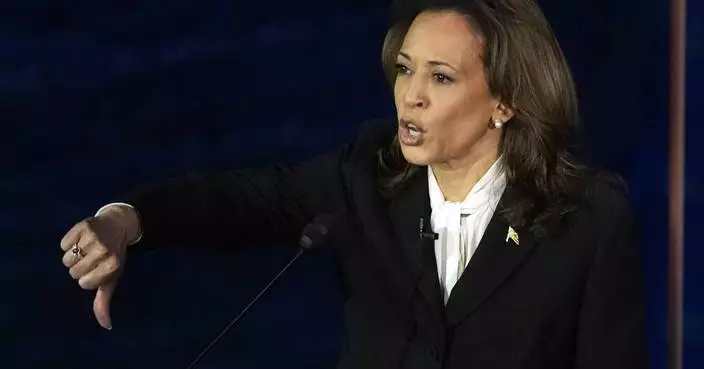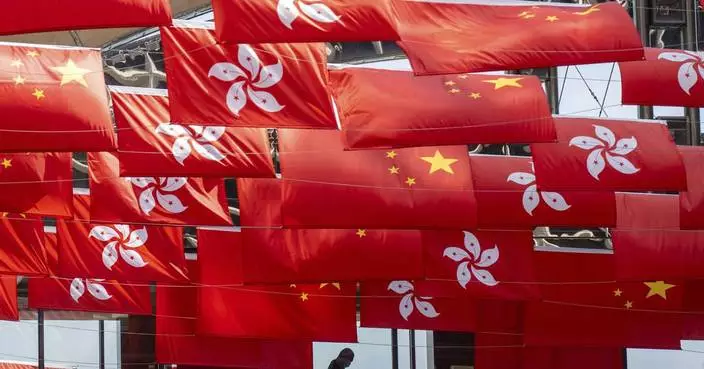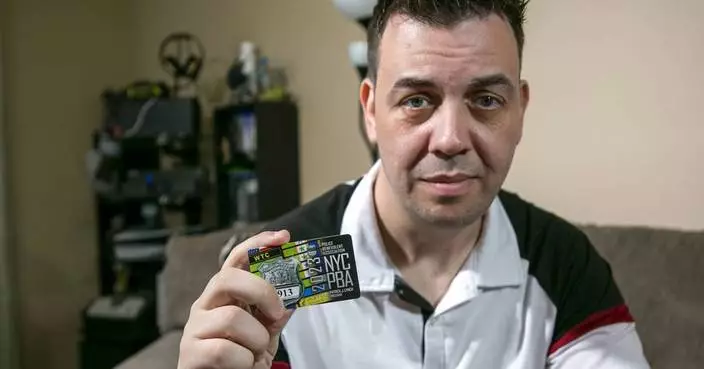A small but important exhibit at the Metropolitan Museum of Art explores a little-known facet of architect Frank Lloyd Wright's creations: his line of wallpapers, printed and woven textiles, and other home goods designed for the public.
"Frank Lloyd Wright Textiles: The Taliesin Line, 1955-60" remains on view through Apr. 5, 2020. It reveals how, in 1954, Wright entered into his first commercial venture, designing a line of affordable home products aimed at the average consumer. The designs were based on Wright's architectural designs and inspired by his buildings.
The line was named Taliesin, after his homes and studios in Wisconsin and Arizona, and was available only through authorized dealers.
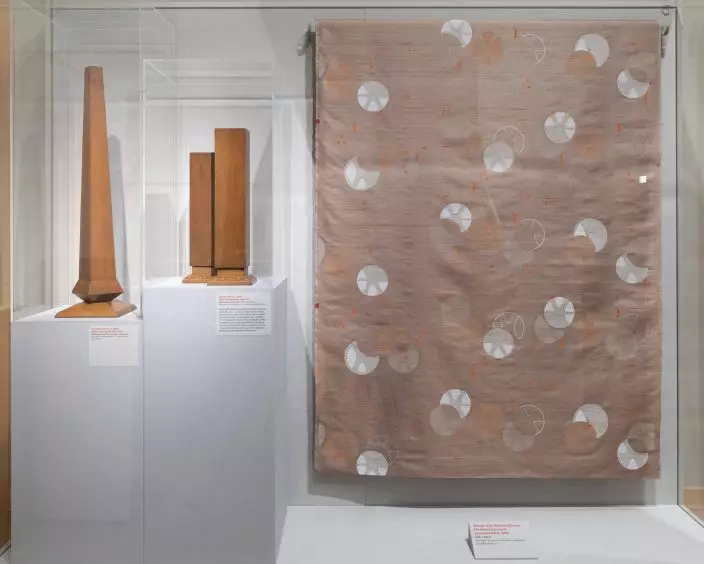
This photo provided by The Metropolitan Museum of Art shows an installation view of "Frank Lloyd Wright Textiles: The Taliesin Line, 1955–60," which runs through April 2020 at the museum in New York. The small but important exhibit at the Met explores a little known facet of the famous architect's creations - his cutting edge textiles. (Metropolitan Museum of Art via AP)
Wright entered into the venture at the urging of his friend Elizabeth Gordon, editor of House Beautiful magazine.
"The intention was that this was a way for his aesthetic to reach a much larger audience," says Amelia Peck, curator of decorative arts in the Met's American Wing, and supervising curator of the Antonia Ratti Textile Center there.
In addition to designing affordable wallpapers and textiles for F. Schumacher and Co., Wright agreed to design furniture (for Heritage-Hendredon), paints (Martin-Senour), rugs (Karastan) and home accent pieces, made by Minic Accessories.
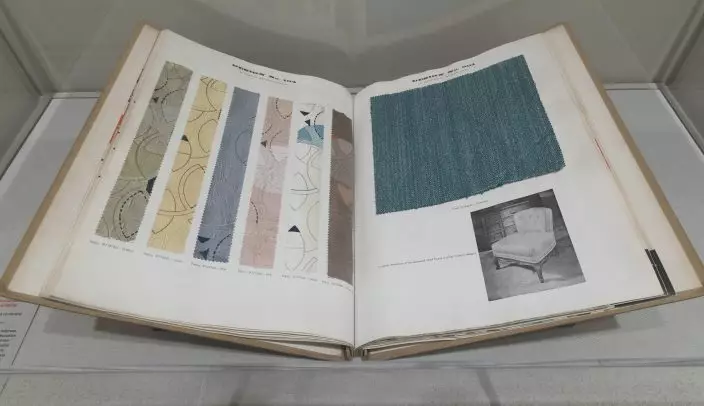
This photo provided by The Metropolitan Museum of Art shows an installation view of "Frank Lloyd Wright Textiles: The Taliesin Line, 1955–60," which runs through April 2020 at the museum in New York. The small but important exhibit at the Met explores a little known facet of the famous architect's creations - his cutting edge textiles. (Metropolitan Museum of Art via AP)
"Wright didn't trust interior decorators. He called them 'inferior desecrators,'" says Peck, adding that another goal of the Wright-approved wallpapers and textiles for upholstery and drapery was to help people get his aesthetic right.
To publicize the Taliesin Line of products, the November 1955 issue of House Beautiful was devoted to Wright's work, presenting the entire collection. Ultimately, though, only the textiles, wallpaper, paint and furniture were produced.
While Wright's paints and furniture did not meet with much success, the wallpapers and textiles did. Many remained in production for a decade, with some updated versions rereleased in 1986 and again as recently as 2017.
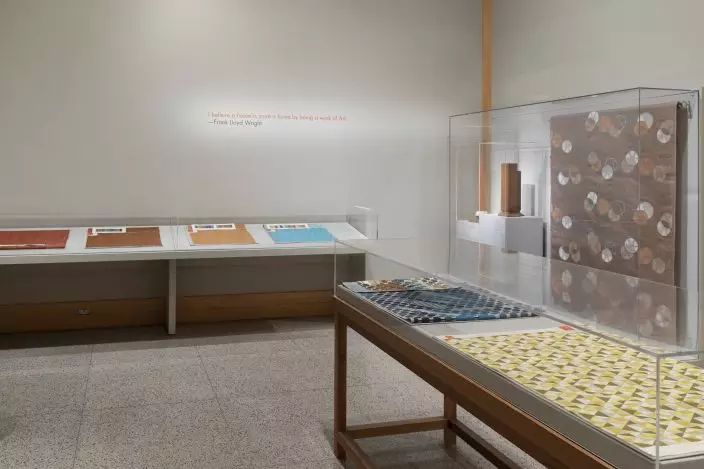
This photo provided by The Metropolitan Museum of Art shows an installation view of "Frank Lloyd Wright Textiles: The Taliesin Line, 1955–60," which runs through April 2020 at the museum in New York. The small but important exhibit at the Met explores a little known facet of the famous architect's creations - his cutting edge textiles. (Metropolitan Museum of Art via AP)
The exhibit features an enormous original sample book, one of only 100 copies of "Schumacher's Taliesin Line of Decorative Fabrics and Wallpapers Designed by Frank Lloyd Wright" (1955). The works were a collaboration between Wright, his apprentices and Schumacher, but Wright had final approval, Peck says.
The exhibit also features examples of some of Wright's wallpapers, and printed and woven fabrics.
While the Japanese influence evident in many of the pieces is no surprise, given Wright's travels to Asia and the way he incorporated Asian elements in his architectural designs, some of the colors will come as a surprise. Far from the muted neutrals popular today, many of the hues are vivid, such as dazzling shades of turquoise. Even more surprising, some of the woven upholstery fabrics are interwoven with Lurex, adding a less than understated bit of sparkle.

This photo provided by The Metropolitan Museum of Art shows an installation view of "Frank Lloyd Wright Textiles: The Taliesin Line, 1955–60," which runs through April 2020 at the museum in New York. The small but important exhibit at the Met explores a little known facet of the famous architect's creations - his cutting edge textiles. (Metropolitan Museum of Art via AP)
"You don't think of Wright as a sparkly sort of guy, but he approved it," she says.
Other fabrics are surprisingly forward-looking. Although designed in the late '50s, some of Wright's patterns seem more reminiscent of the '60s, featuring bright curvy patterns in dazzling colors.
The installation also features two Minic vases (which Wright referred to as "weed holders") in mahogany with metal lining.
Some of the textiles are still available from Schumacher, which released anniversary editions of some, although the colors now available tend to be more muted, Peck says.
All of the pages of the Taliesin Line sample book have been newly photographed and can be viewed on the museum's website, along with all 29 pieces of Wright fabric that are in the Met's collection.
To put the textiles in context, visitors are encouraged to combine a visit to the textile installation with a visit to a separate installation of Wright's architectural drawings, "Frank Lloyd Wright: Designs for Francis and Mary Little," on view through Nov. 12. It features drawings and letters exploring Wright's working relationship with the Littles, for whom he built a house in Peoria, Illinois, and another in Lake Minnetonka, Minnesota.
The museum also features "Living Room from Francis W. Little House, 1912-14," a permanent installation that was originally the living room of the Littles' summer home in a suburb of Minneapolis. The room reveals the extent to which Wright's architecture and decor are interconnected.
WARSAW (AP) — U.S. Secretary of State Antony Blinken wrapped up a three-nation, Ukraine-focused European tour in Poland on Thursday after hearing repeated appeals from Ukrainian officials to use Western-supplied weaponry for long-range strikes inside Russia.
Blinken traveled to Warsaw after spending a day in Kyiv with British Foreign Secretary David Lammy during which they pledged to bring the Ukrainian requests to their leaders.
U.S. President Joe Biden and British Prime Minister Keir Starmer are to meet in the United States on Friday amid signs both Washington and London are growing more receptive to allowing the Ukrainians to use their arms to hit targets farther inside Russia than previously okayed.
“As what Russia’s doing has changed, as the battlefield has changed, we’ve adapted,” Blinken said at a news conference in Warsaw.
Biden has allowed Ukraine to fire U.S.-provided missiles across the border into Russia in self-defense, but has largely limited the distance they can be fired.
Just last week Defense Secretary Lloyd Austin met with Ukraine president Volodymyr Zelenskyy and pushed back on the long-range ask, noting that Ukraine has already been able to strike inside Russia with its own internally produced systems including drones.
One of the key requests from Kyiv is to strike with U.S.-produced Army Tactical Missile Systems, or ATACMS. The Pentagon has noted they wouldn't be the answer to the main threat Ukraine faces from long-range Russian fired glide bombs, which are being fired from more than 300 kilometers away, beyond the ATACMS reach, said Pentagon spokesman Lt. Col. Charlie Dietz.
In addition, the U.S. supply of ATACMS missiles, which can cost up to $1.5 million each depending on the variant, are “finite,” Dietz said. “We need to be judicious about where and when they are deployed.”
At Ramstein Air Base last week Austin said the arguments the Ukrainians have used for long range strikes are like the discussions the U.S. had with Ukraine over Abrams tanks. While those systems were ultimately provided, they are currently not being used.
“I don’t believe one specific capability will be decisive, and I stand by that comment,” Austin said in Germany.
At the Pentagon Thursday, press secretary Maj. Gen. Pat Ryder would not say if Austin's views had changed since last week.
“As of right now, the policy has not changed. I’ll just leave it there,” Ryder said.
In Warsaw, Blinken said, “One of the purposes of my visit to Kyiv yesterday was to hear from our Ukrainian partners what they believe they need now to deal with the current battlefield, including in eastern Ukraine and other parts of the country"
“I can tell you that as we go forward we will do exactly what we have already done, which is we will adjust as necessary … in order to defend against Russian aggression," Blinken said.
He delivered a similar message in Kyiv a day earlier. In both cases, the language was similar to that which he used in May, shortly before the U.S. green-lit Ukrainian use of U.S. weapons just inside Russian territory.
The diplomatic visit unfolded as Russia’s bigger and better-equipped army bears down on Ukraine’s eastern Donetsk region and conducts aerial attacks on cities across the country using missiles, glide bombs and drones that claim many civilian casualties.
NATO member Poland, which shares a border with Ukraine, has been supportive of the Ukrainians and Blinken heard requests for easing weapons-use restrictions from Polish Foreign Minister Radek Sikorski.
Sikorski argued that Ukraine should be allowed to use Western weapons against Russia in self-defense, because “Russia is committing war crimes by attacking civilian targets.”
“Missiles that hit these civilian targets are fired from bomber aircraft from over the territory of Russia. These bombers take off from airfields on Russia’s territory,” Sikorski said. “A victim of aggression has the right to defend itself.”
“So I believe that Ukraine has the right to use Western weapons to prevent war crimes,” Sikorski added.
Blinken also met in Warsaw with President Andrzej Duda and Prime Minister Donald Tusk, who share Sikorski's pro-Ukraine stance.
On Wednesday, Blinken and Lammy announced that the United States and Britain had pledged nearly $1.5 billion in additional aid to Ukraine during their visit to Kyiv. Blinken announced more than $700 million in humanitarian aid, while Lammy confirmed that his country would provide another $782 million in assistance and loan guarantees.
Much of the effort was aimed at bolstering the energy grid that Russia has repeatedly pounded ahead of an expected difficult winter.
Ukraine's wish list is long and non-military assistance is certainly on it, but Ukrainian officials made clear their most important ask is for easing restrictions on where Western weapons can be used. Air-raid sirens sounded repeatedly during the visit, causing delays in their schedule and forcing them to cancel a wreath-laying ceremony.
Blinken said he would bring the discussion with Zelenskyy about the missiles “back to Washington to brief the president” and that Biden and Starmer will “no doubt” talk about the issue when they meet in Washington.
Relations between Ukraine and its Western partners have been increasingly strained by Kyiv’s repeated appeals for the West’s authorization to use long-range weapons from the United States and other allies to strike targets deeper inside Russia.
That issue took on added urgency after Russia’s latest reported acquisition of ballistic missiles from Iran, but Western leaders have so far balked at Ukraine’s request, fearing that, if granted, it could escalate the war.
Zelenskyy has said that he has a plan for victory which includes several components, including goals Ukraine hopes to achieve on the battlefield as well as diplomatic and economic aims.
In late August he described Ukraine’s incursion into Russia’s Kursk region as part of that plan, saying it had removed the Russian threat from Ukraine’s Kharkiv, Sumy and Chernihiv regions. He has said he hopes to present the plan to both Harris and Trump in September, not knowing which will win the presidency.
“Let’s count on some strong decisions, at least,” Zelenskyy said Wednesday. “For us, it’s very important.”
Vanessa Gera contributed from Warsaw. Tara Copp contributed from Washington.
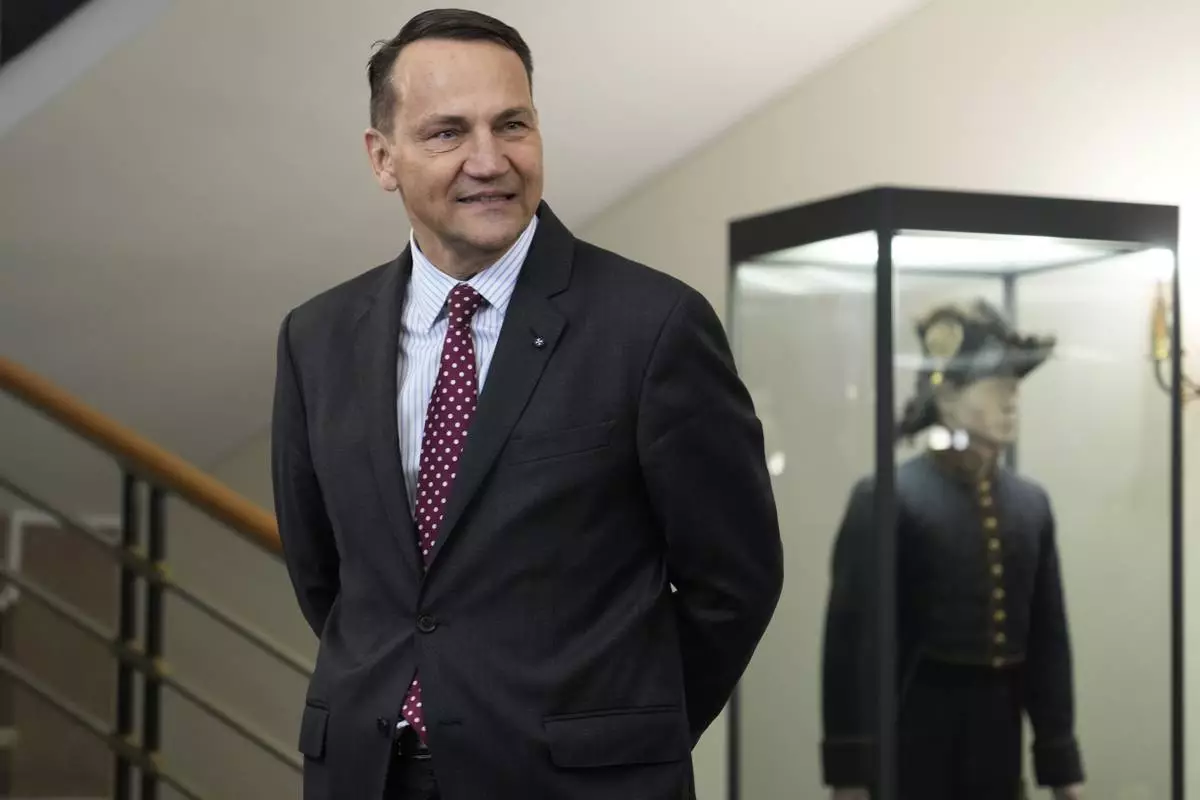
Polish Foreign Minister Radosław Sikorski waits for the arrival of U.S. Secretary of State, Antony Blinken for a talks in Warsaw, Poland, Thursday, Sept. 12, 2024. (AP Photo/Czarek Sokolowski)

U.S. Secretary of State Antony Blinken, left, welcomes by Polish Foreign Minister Radosław Sikorski, right, for talks in Warsaw, Poland, Thursday, Sept. 12, 2024. (AP Photo/Mark Schiefelbein, Pool)
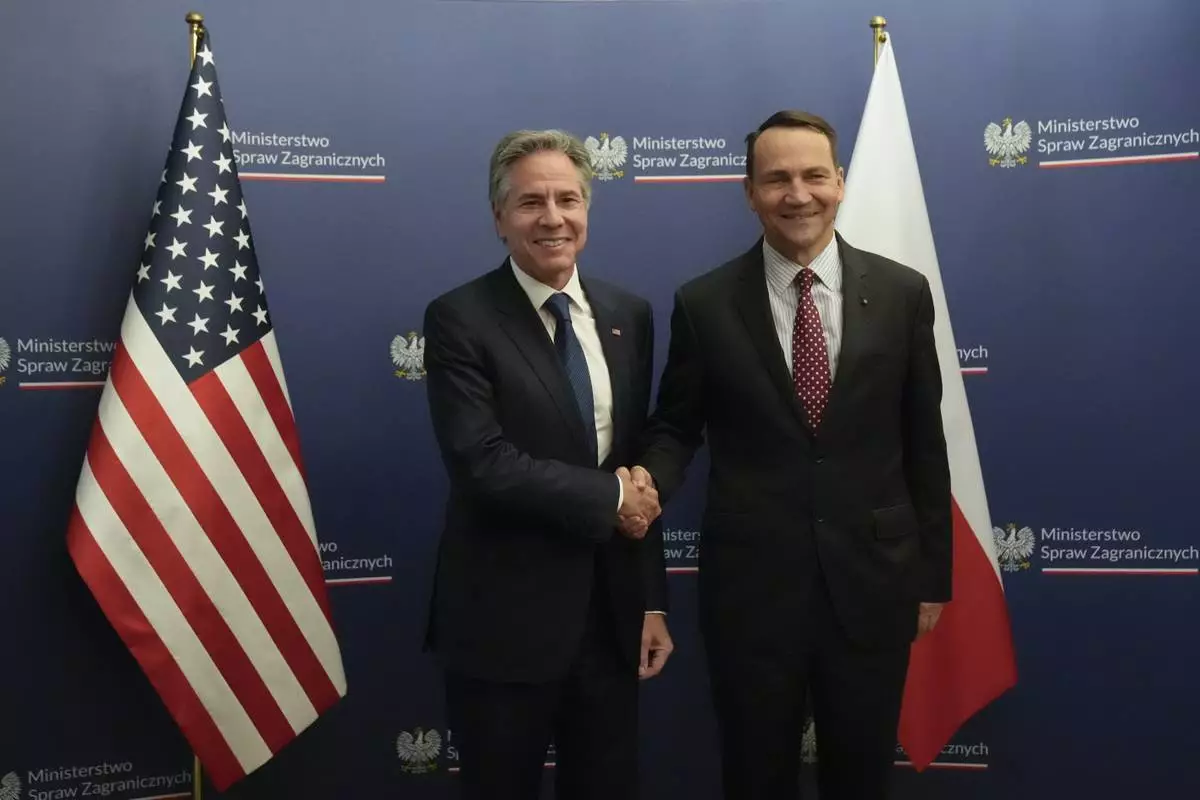
U.S. Secretary of State Antony Blinken, left, welcomes by Polish Foreign Minister Radosław Sikorski, right, for talks in Warsaw, Poland, Thursday, Sept. 12, 2024. (AP Photo/Mark Schiefelbein, Pool)
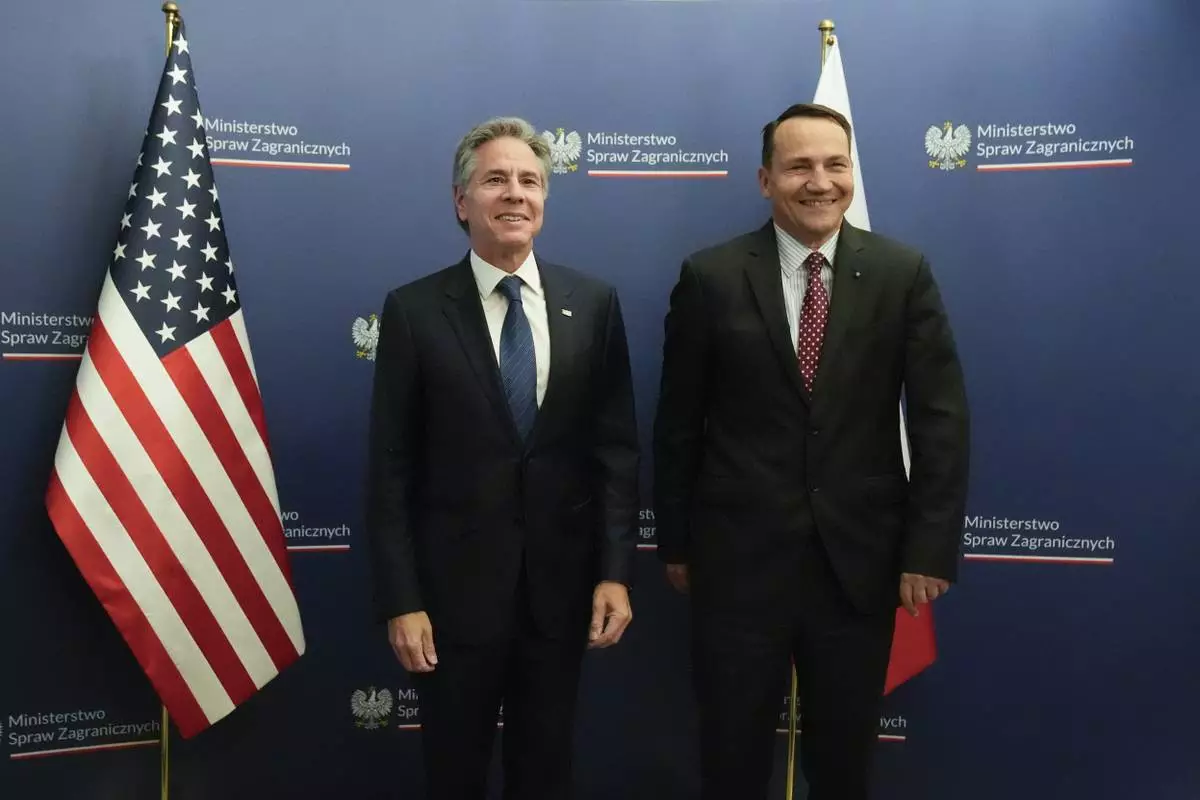
U.S. Secretary of State Antony Blinken, left, welcomes by Polish Foreign Minister Radosław Sikorski, right, for talks in Warsaw, Poland, Thursday, Sept. 12, 2024. (AP Photo/Mark Schiefelbein, Pool)

U.S. Secretary of State Antony Blinken, left, welcomes by Polish Foreign Minister Radosław Sikorski, right, for talks in Warsaw, Poland, Thursday, Sept. 12, 2024. (AP Photo/Czarek Sokolowski)
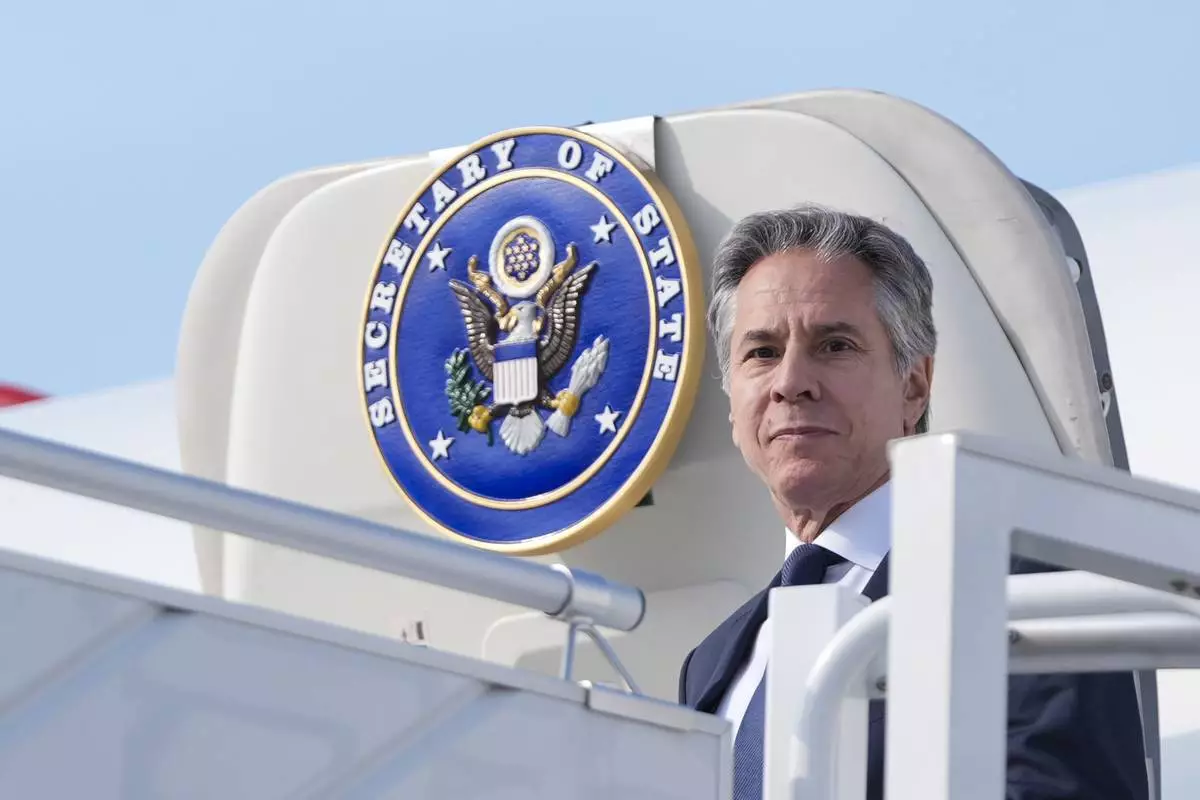
U.S. Secretary of State, Antony Blinken waves as he arrives at Chopin Airport in Warsaw, Poland, Thursday, Sept. 12, 2024. (AP Photo/Mark Schiefelbein, Pool)
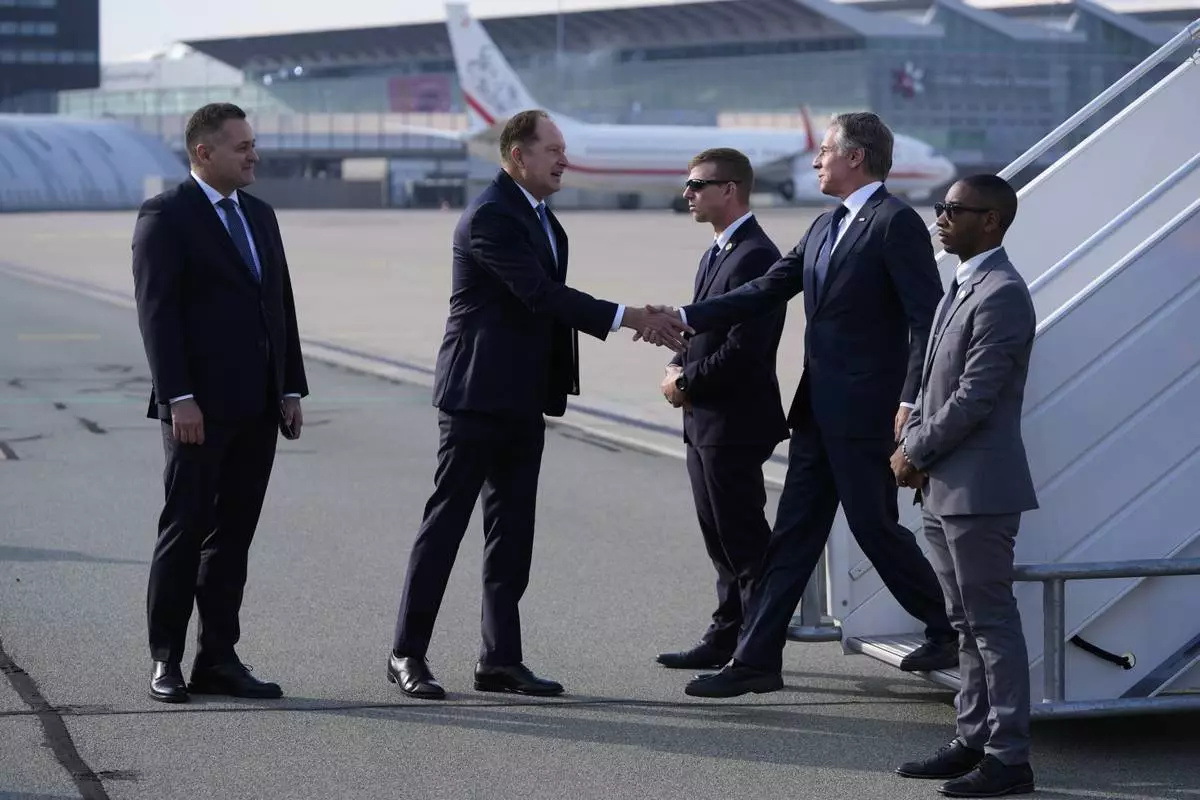
U.S. Secretary of State, Antony Blinken, second from right, welcomes by Ambassador of the United States to Poland Mark Brzezinski, second from left, as he arrives at Chopin Airport in Warsaw, Poland, Thursday, Sept. 12, 2024. (AP Photo/Mark Schiefelbein, Pool)
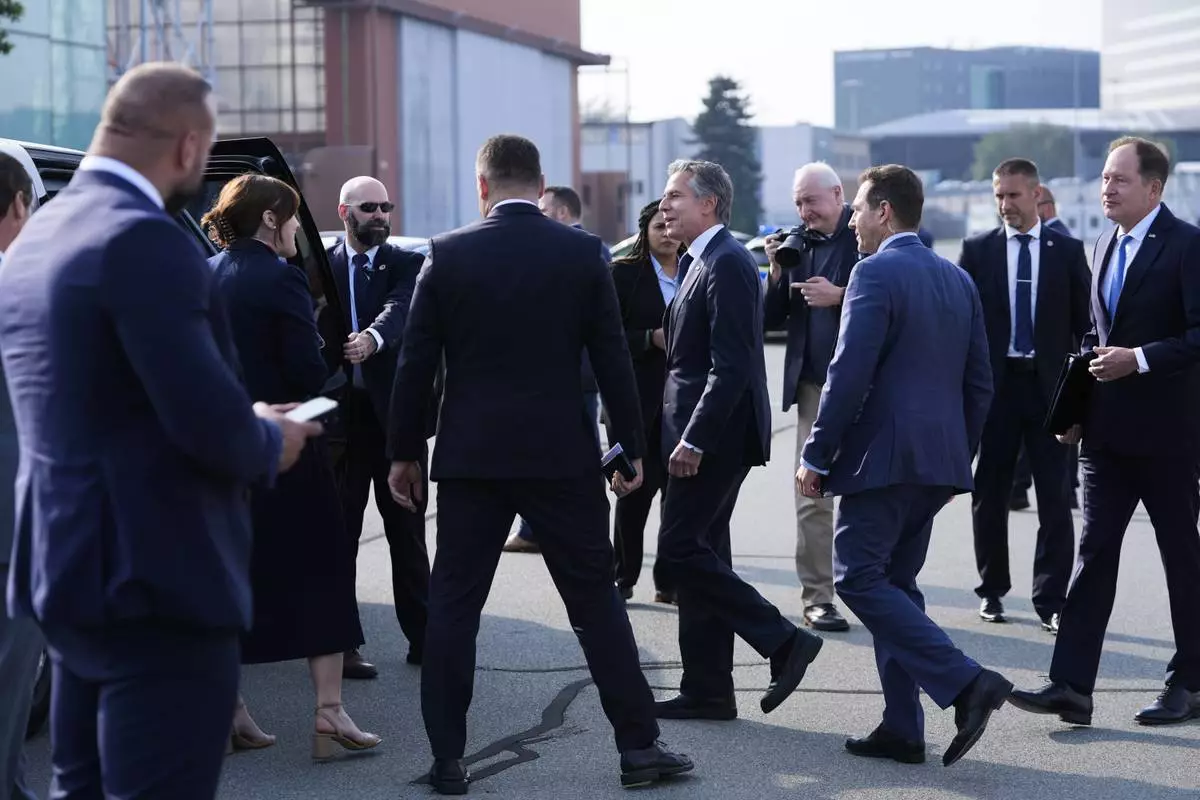
U.S. Secretary of State, Antony Blinken, center, arrives at Chopin Airport in Warsaw, Poland, Thursday, Sept. 12, 2024. (AP Photo/Mark Schiefelbein, Pool)

U.S. Secretary of State, Antony Blinken waves as he arrives at Chopin Airport in Warsaw, Poland, Thursday, Sept. 12, 2024. (AP Photo/Mark Schiefelbein, Pool)
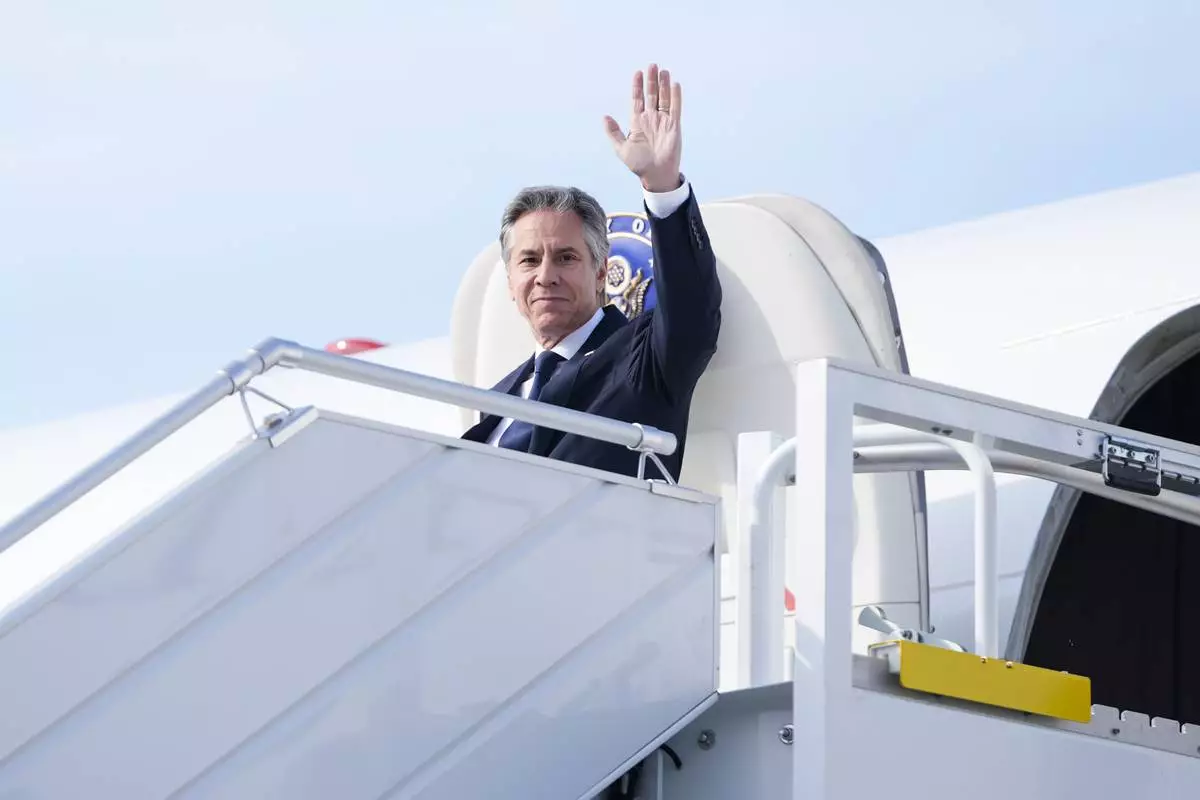
U.S. Secretary of State, Antony Blinken waves as he arrives at Chopin Airport in Warsaw, Poland, Thursday, Sept. 12, 2024. (AP Photo/Mark Schiefelbein, Pool)

















